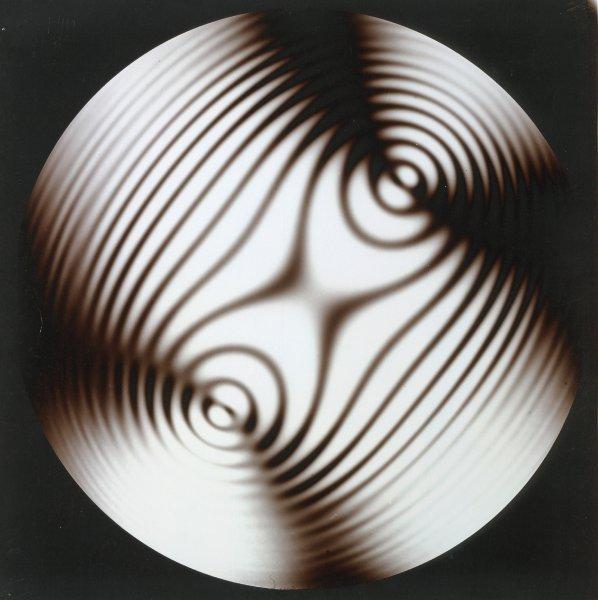ELECTRIC OPRPHEUS ACADEMY
SPILLING THE BEANS #7 DOING A FIGURE
EIGHT
If one stands before the task of moving something
back and forth or up and down (for instance, the pickup in a string model).
Then the sine way is not a good solution, because the area of the direction
reversal has lingered
much too long. A triangular wave is, in turn, too abrupt on the reversal
points.
On the search for a means between both, I hit upon the 'figure eight'
or, as the mathematicians call it, the 'lemniscate'.
Apart from the fact that the horizontal form of it serves as the sign
of infinity and also has other mystical meanings, friends who are skilled
in manual crafts have assured me that this movement is the most organic
one for many activities: wiping, sanding, polishing, etc.
gen.achter 400hz
If one observes the movement in the longitudinal axis, an expeditious
course appears, similar to the triangular wave with a natural delay in
the reversal spot, but not as long as by a sine wave.

From a tonal perspective, one observes in one channel (on an axis) the
fundamental tone with uneven overtones, in the other channel the even
overtones. The formulas for it originate from the Swiss mathematician
Jakob Bernoulli (1655-1705). In one simplified form for a generator, it
reads as follows:
x = cos(phi)/(sin(phi)²+1); y = cos(phi)*sin(phi)/(sin(phi)²+1)
(for those who want to know ...)
It is available in this form in VASP and can be observed in the xy representation
(hotkey 'x' to view.)
view.
An application in the string model to control
the two pickups:
k1=osc.chord (s,cyc=4,dim=128,ini=drag)
k2=gen.achter (c)
k3=rmo (s,*k1) "remove
offset - one could actually put it
out=test.wav (s,*k3) "immediately
into the string model
seg=1
dur: 10
k1.tens: 0.4
k1.elast: 0.4
k1.damp: 5 [damp]
k1.smooth: 5 [damp]
k1.inidur: 0.001
k1.iniamp: 1
k1.inipos: 4
k1.pu.0: 90 (c=k2.0,cm=lin,ca=30)
k1.pu.1: 90 (c=k2.1,cm=lin,ca=30)
k2.freq: 0.5
* * *
It is no great effort to also execute this function as waveshape (waveshape.achter), or to replace the circular motion in the low-frequency noise noise.band, which is so effective for controls, with a lemniscate. However, the function appears to me to be so fundamental as a movement type that a general inclusion is called for. At least for the generators that are based on phase modulation, it is not difficult to replace the circular motion, which underlies all of them, with a lemniscate. Consequently, in the current version of AMP there are the variants:
noise.silk8
noise.fmweight8
noise.band8
noise.center8
In mono and the normal multi-track modes, a triangular-like wave of the x-axis will be used; in complex (c) modus, the complex sample vectors depict, with variable speed, a lemniscate.
akueto
G.R.
(c) Günther Rabl 2010
Addendum:
The lemniscate is considered to be a special case of the 'Cassinic Curves', which I recently found an illustration of. (The photograph of an interference pattern of a crystal, I believe).

Hans Hauswaldt: Aragonite, ca. 1910, shiny collodion paper
© Albertina, Vienna
